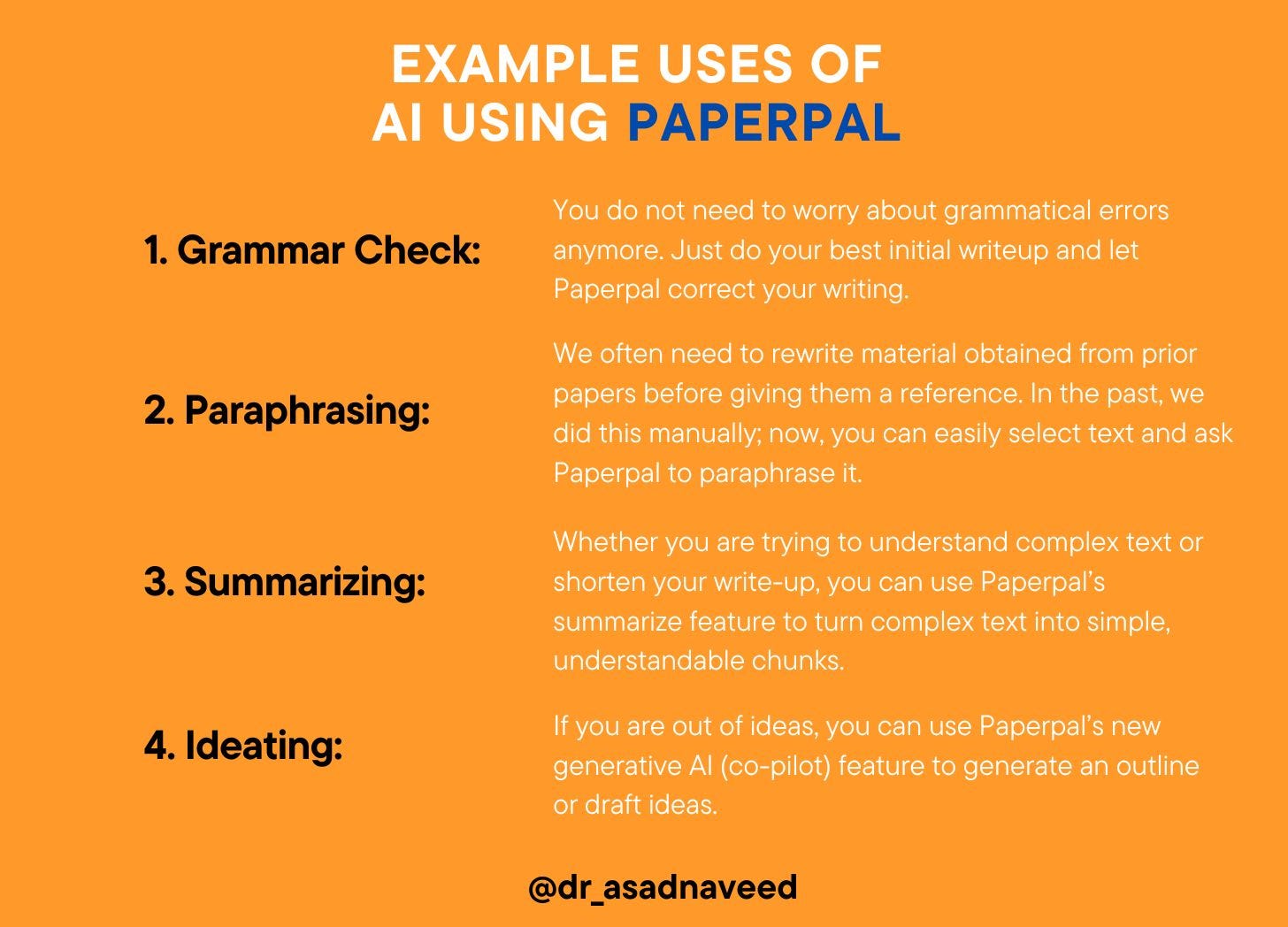Writing a Scientific Paper: A beginner's guide
A step-by-step process
Shoutout:
Paperpal, a tool designed specifically for academic writing, just introduced a new generative AI feature called Paperpal Co-pilot. This new feature lets you brainstorm ideas, write original concepts more clearly, and summarize text! Why pay for Grammarly today when Paperpal offers so much more? Try Paperpal here today: https://bit.ly/3LVy2TI
Hi there! In this email, I’ll provide a step-by-step tutorial on writing a scientific article. I’ll first discuss the crucial steps to take before you begin writing, then move on to explain how to seamlessly construct each section of your article.
In the final part, I’ll share some tips on how to ethically utilize AI and reference management tools to expedite your work and avoid writer’s block.
If you are a young researcher looking to produce scientific publications to enhance your career prospects, apply for funding, or complete your thesis, this post is for you.
Step 1 - Doing your homework:
A certain amount of preparatory work must be done before you write a word of your article. This background work should generally already have been accomplished by the time you are at the writing stage.
Here are a few background tasks you need to correspond to the type of paper you are writing:
Other forms of background work include writing a research protocol or proposal and choosing a target journal.
All the time you invest in preparing the protocol or proposal for your project is an advance on the writing of the article that will come out of your project.
Identifying the target journal in which you intend to submit your research will have consequences for the formatting and orientation of your writing style.
You don’t need to worry about publication fees when you are starting. Many reputable journals offer fee waivers to young researchers and individuals from lower and middle-income countries.
Additionally, I have curated a list of 813 PubMed-indexed journals that you can download on this link for free. Just enter 0 in the price box.
Step 2: Writing the paper
Most scientific journals follow the so-called ‘‘IMRaD’’ format, i.e., introduction, methods, results, and discussion.
At the end, there must be a list of bibliographic references, tables, and the legends of any figures. There may also be other optional sections, such as acknowledgments, conflicts of interest, or authors’ contributions.
In this diagram, I’ll detail key pointers to help you write each section easily.
Furthermore, you’ll need to write a conclusion that conveys the key points and an abstract section that summarizes the paper.
This will ensure you can create a draft circulated to their co-authors and senior mentors for further refinement.
Remember, writing poorly is the first step toward writing well. Your draft can be edited, not a blank page.
Step 3: Using Tools
Artificial intelligence (AI) tools are becoming a norm and can help overcome language barriers and get ideas across more clearly and quickly.
However, AI tools must be used ethically.
This is where Paperpal comes in. Paperpal is explicitly designed for academic writing, and here are a few ways to use it:
Paperpal has a free version for you to try out. Check it here.
Another software that can save you thousands of hours is Zotero. It lets you manage and input references with easy clicks. It also lets you annotate PDFs and export selected text for further writing.
I’ve written on how to use Zotero in the past here.
That is it! I hope this guide pushes you to start writing today.
If you found this useful, consider subscribing to my instagram page: https://www.instagram.com/drasadnaveed/
I’m going to start putting visual guides and infographics on it next week.
Thank you,
Asad
Extras:
Previous hits:
YouTube video🎬:Convert a PDF to Slides in 2 minutes





Outstanding Approach - Appreciated sir
This is very helpful thanks a lot!